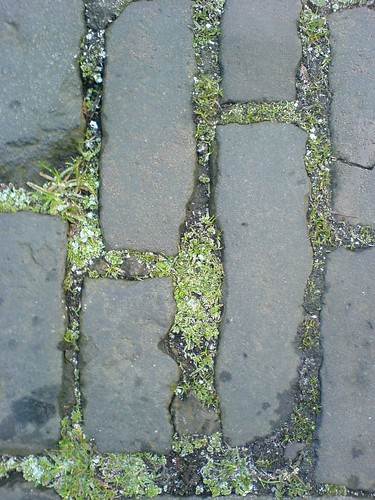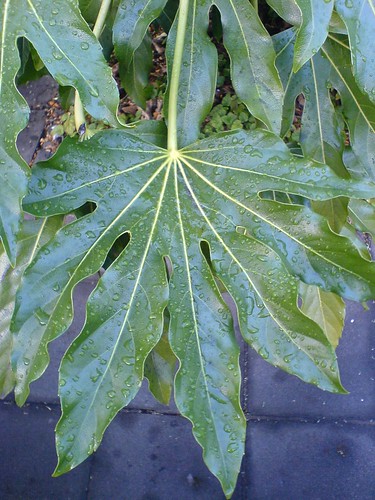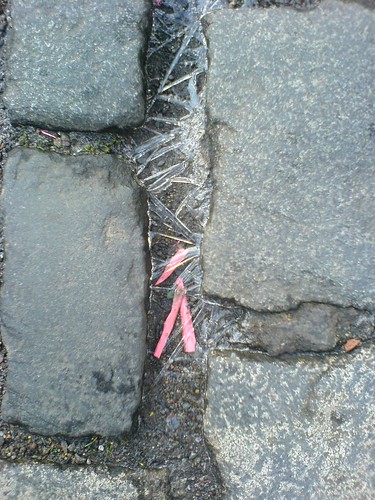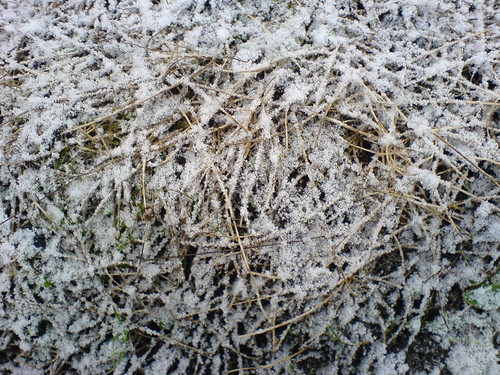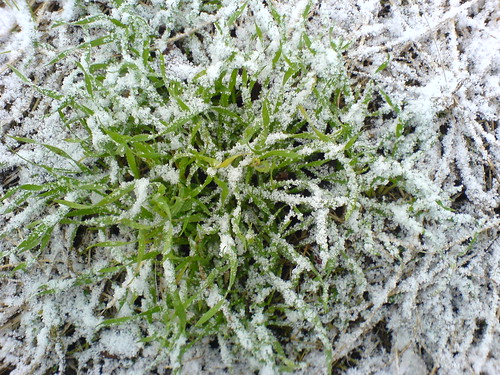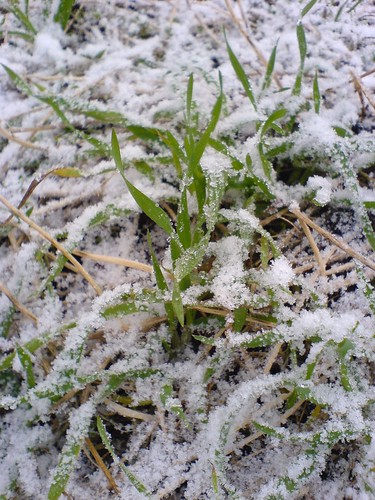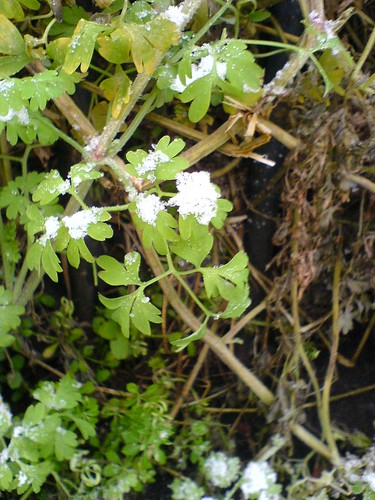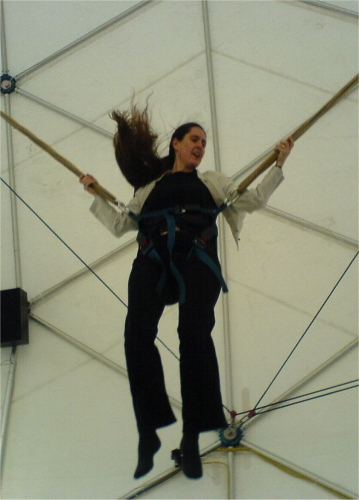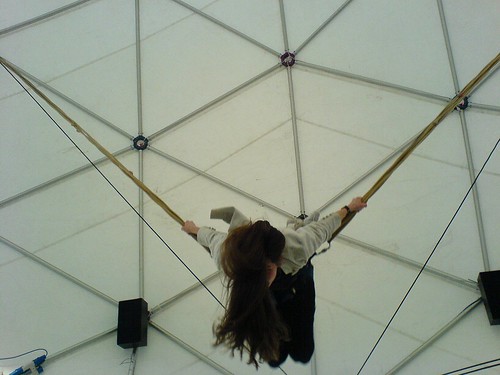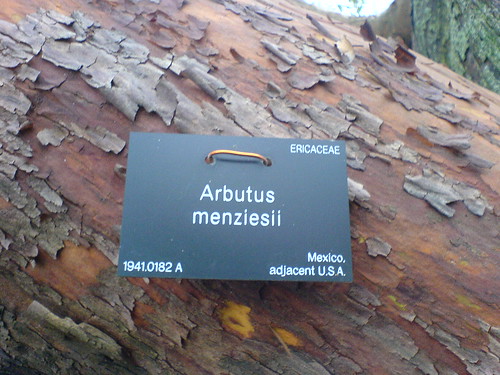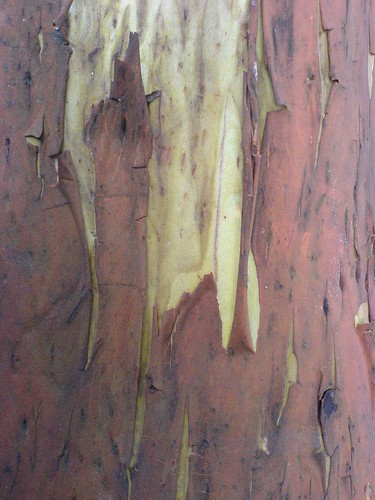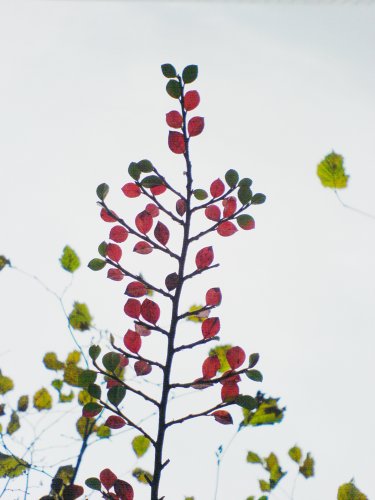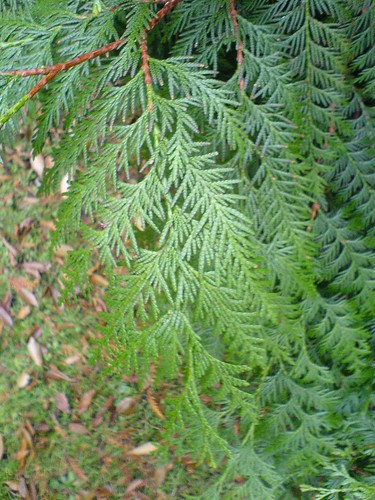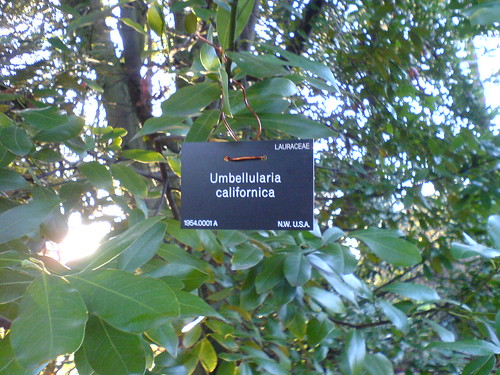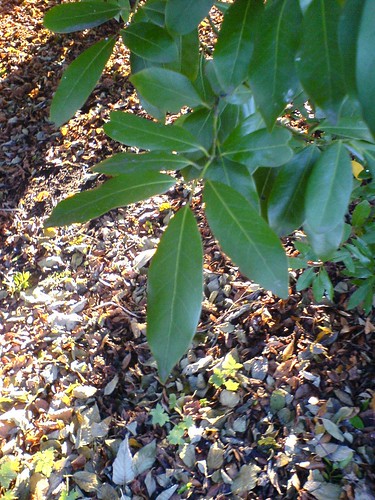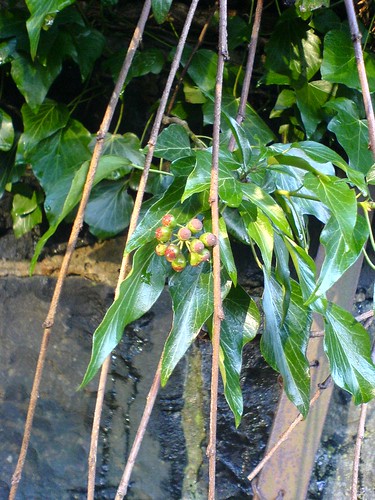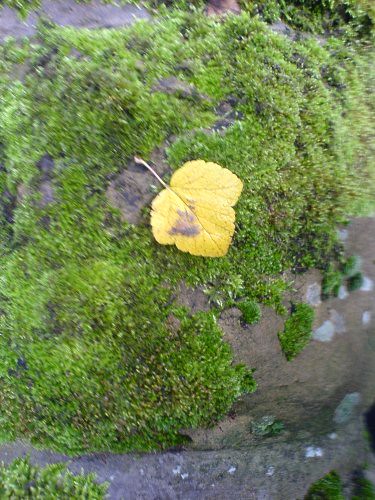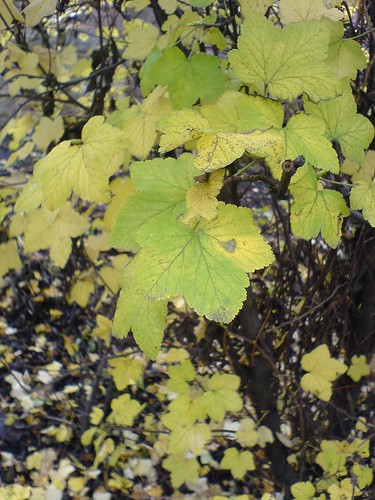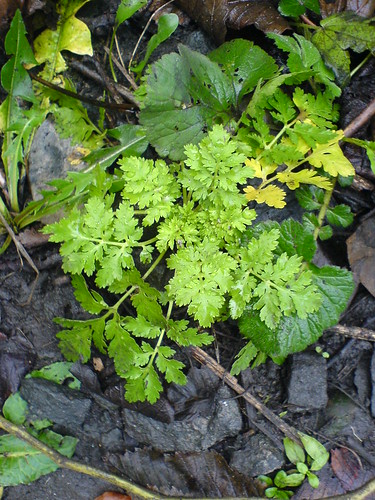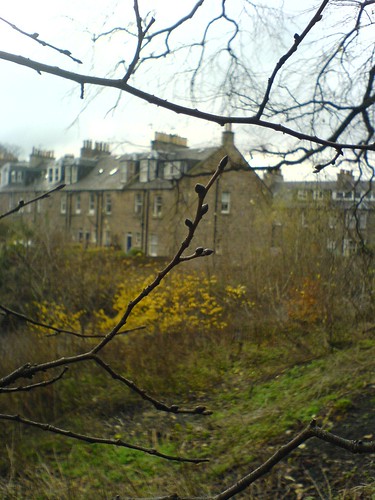Due to a combination of factors (longer lunchtime walks, better camera phone, encouragement by commenters), I’ve been taking a lot more pictures of late.
I’ve been in love with photography since I was 15 or 16, when I got a 35mm camera (a Pentax ME Super) from my parents along with free run of the darkroom. I spent a year or two exploring the world as seen through a lens, and inhaling vast quantities of extremely interesting chemicals.
One of the things I learned early on is that other people don’t see the same things I see. Yes, we both look at a tree and go “Big thing, brown on bottom, green on top.” But something in me is also going “Oooh! Oooh! Pattern and regularity of leaves as they grow, shapes of trunks and branches! Wow!” Seriously. For every tree unless I consciously shut it off. I walk through the Botanic Gardens with my mouth open, or smiling irrepressibly, when I go alone. I also get that feeling from a lot of repetitive patterns and textures. (Ask Martin about my reaction to the hobbit cloaks in the Lord of the Rings films.)
But I found, showing my “Oooh! Oooh! Pattern!” shots to other people, that they didn’t get the same buzz. My mother once said it looked like I’d just pointed the camera at everything and taken a picture. The two decades since then have been spent, at least in part, trying to find ways to show other people what I see all the time. I do things like choosing a contrasting element against the patterned background, or photographing patterns with other redeeming features, such as good colour saturation.
But the other day, I found a link to a set of photos by professional photographer Jim Brandenburg. Although I’m intrigued by the specific challenge he set himself – 90 days’ photography permitting only one exposure a day – what really delighted me is that some of his pictures are ones I would take myself (if I were his technical equal). He can use pattern, and pattern alone, to lead the viewer into the shot. His quaking aspen shot, the Patterns of Branches, and most of all his picture of Norway Pine grove are all part of what I have been trying to capture for twenty years.
I’m not discouraged to have seen these shots – far from it. I’m excited by the chance to learn from them. Maybe I can find other ways to lead people into the world I see, and show them how beautiful it is.
Today, at lunchtime, I made my first attempt at a “pattern” photograph that did not use a contrasting foreground element to focus the viewer.
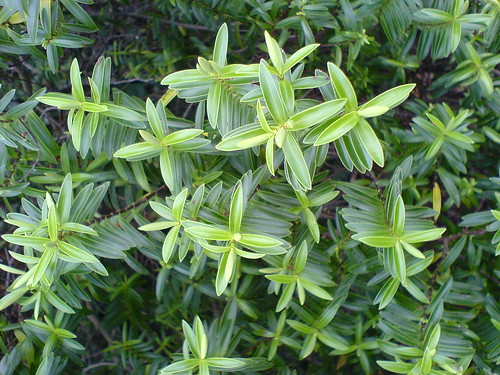
Taken 20 December 2005
On an unrelated note, I also got my camera to do this ghostly image (entirely untweaked, I promise you!). It’s of the disused Scotland Street tunnel, which has one brave plant trying to eke out a single-leaf existence in its shadows.
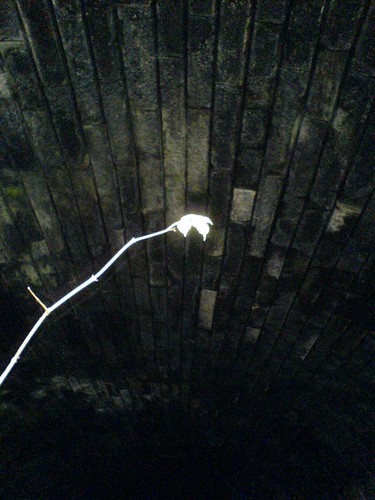
Taken 20 December 2005

